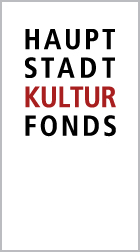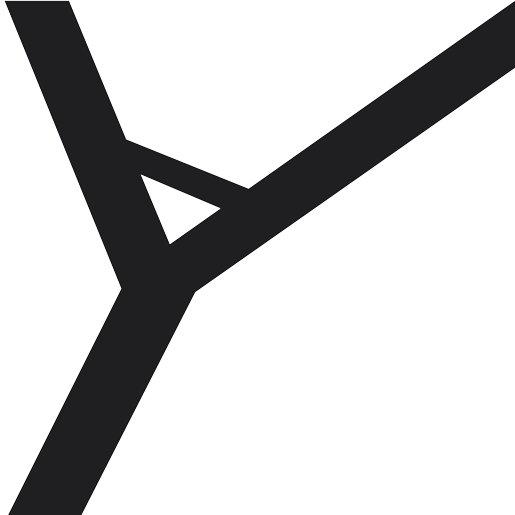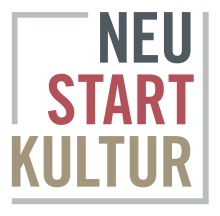


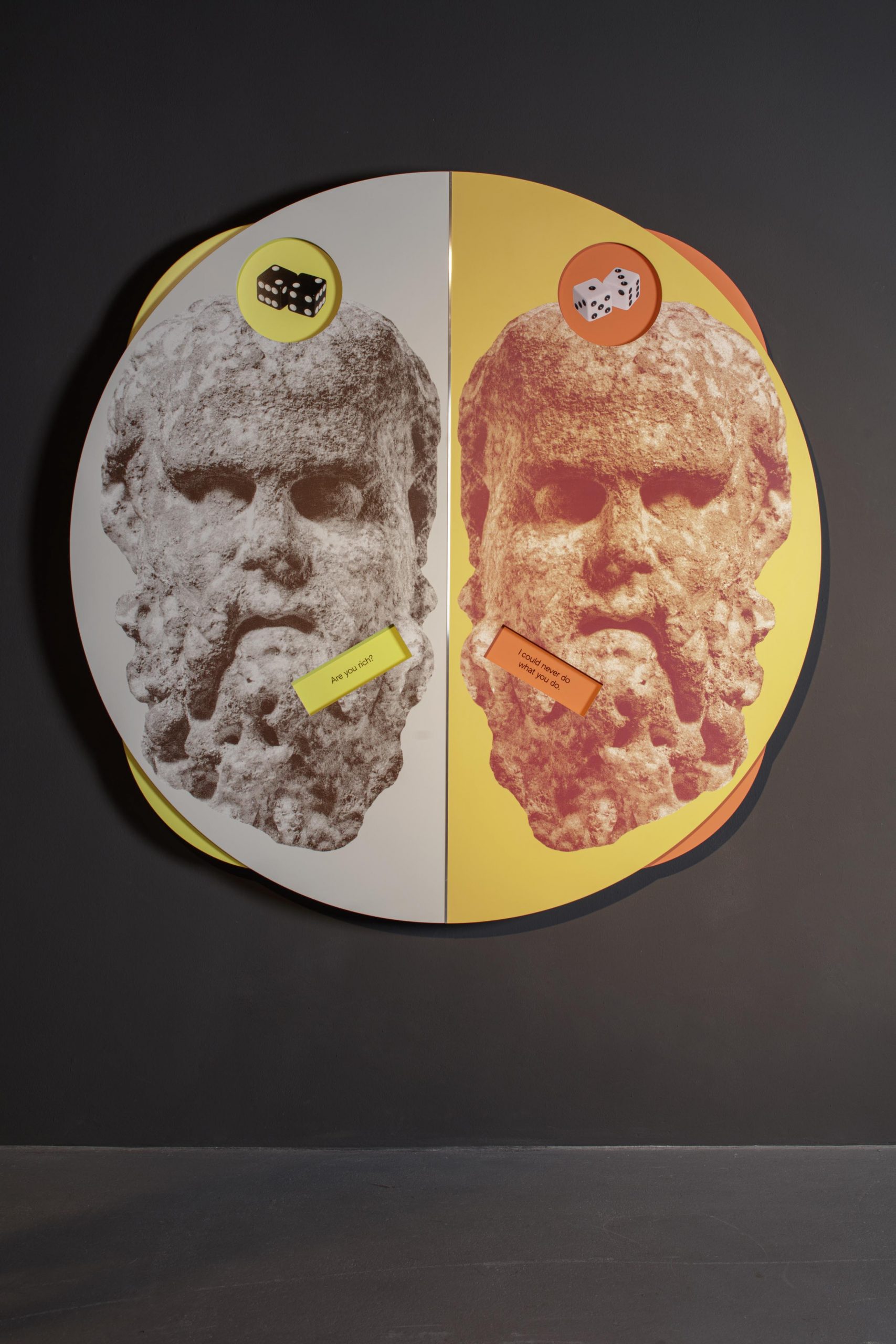


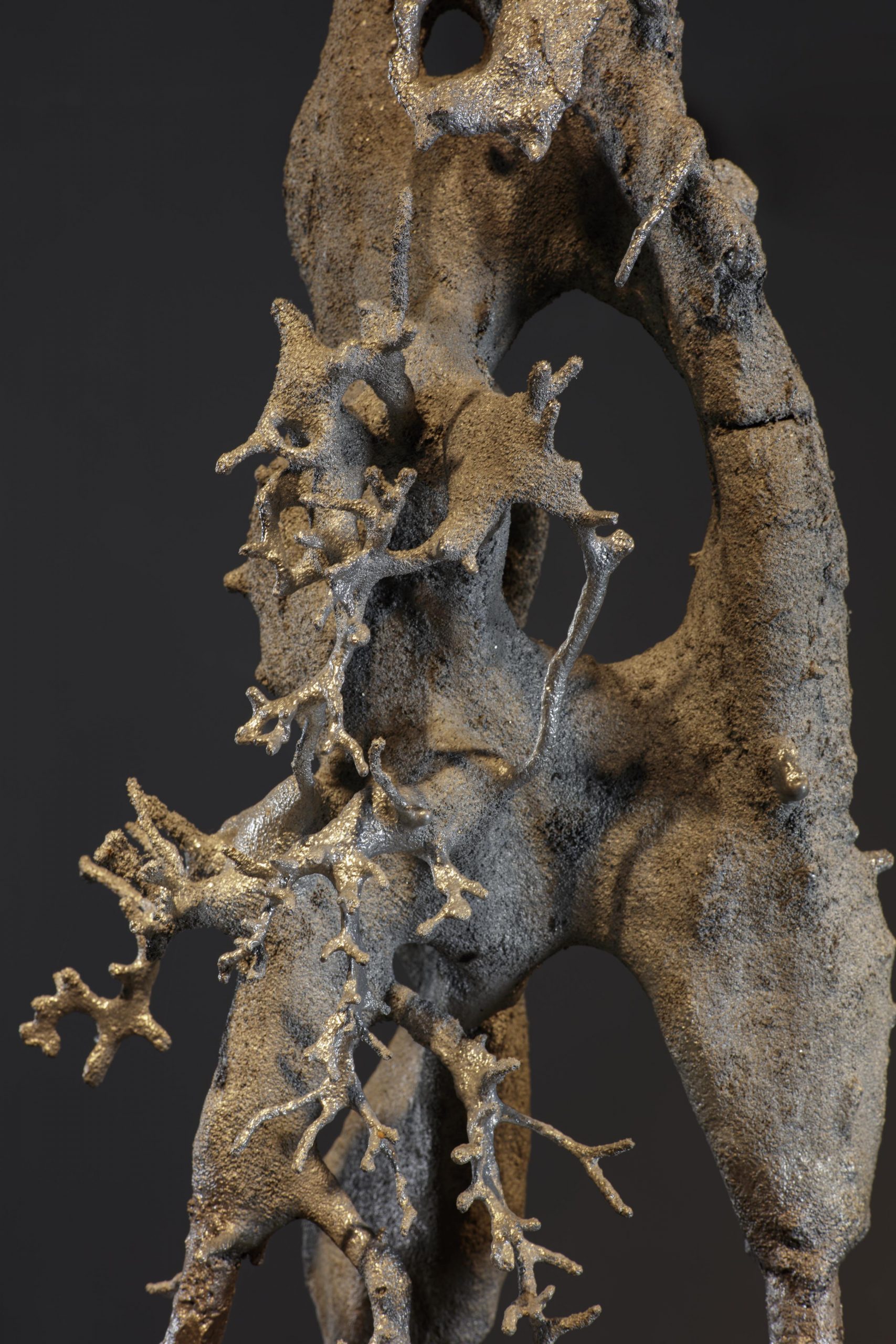

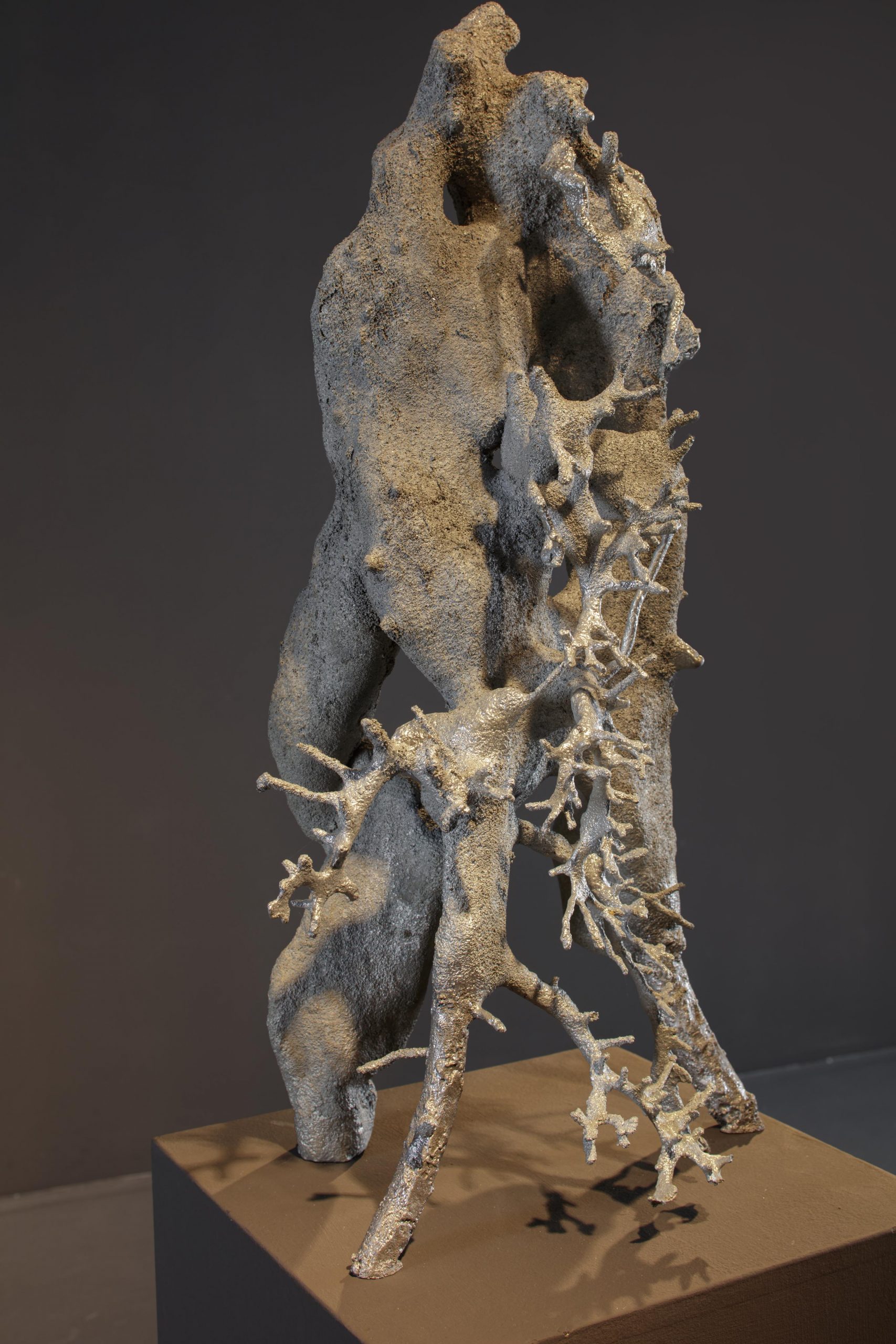
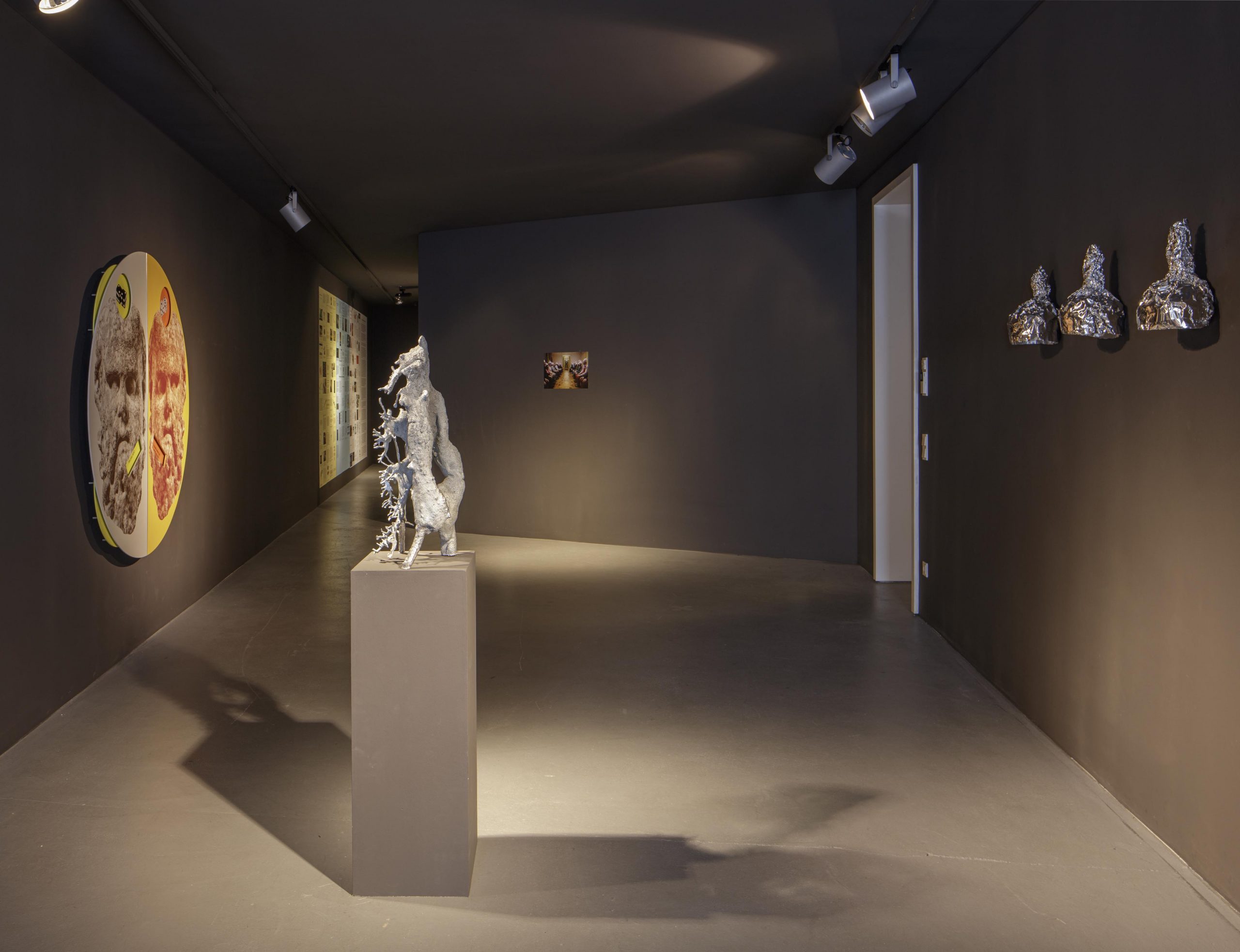
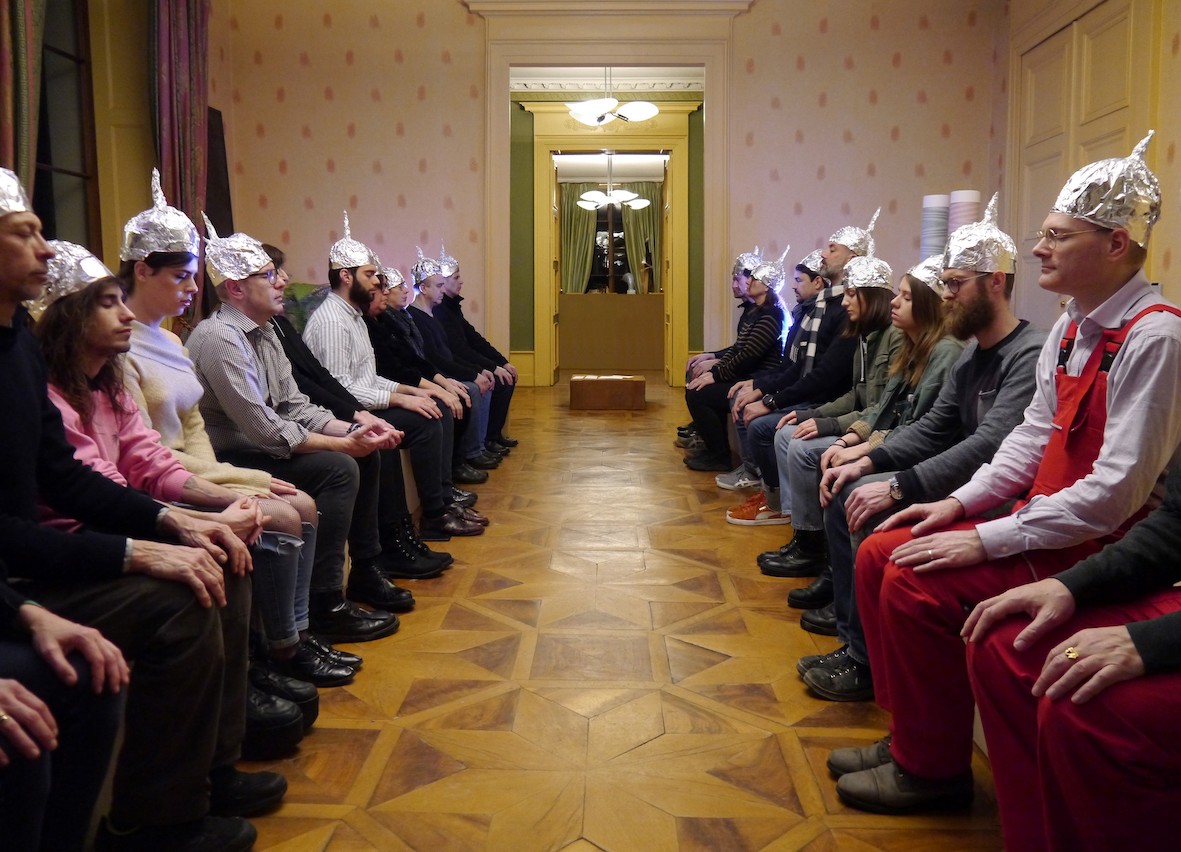
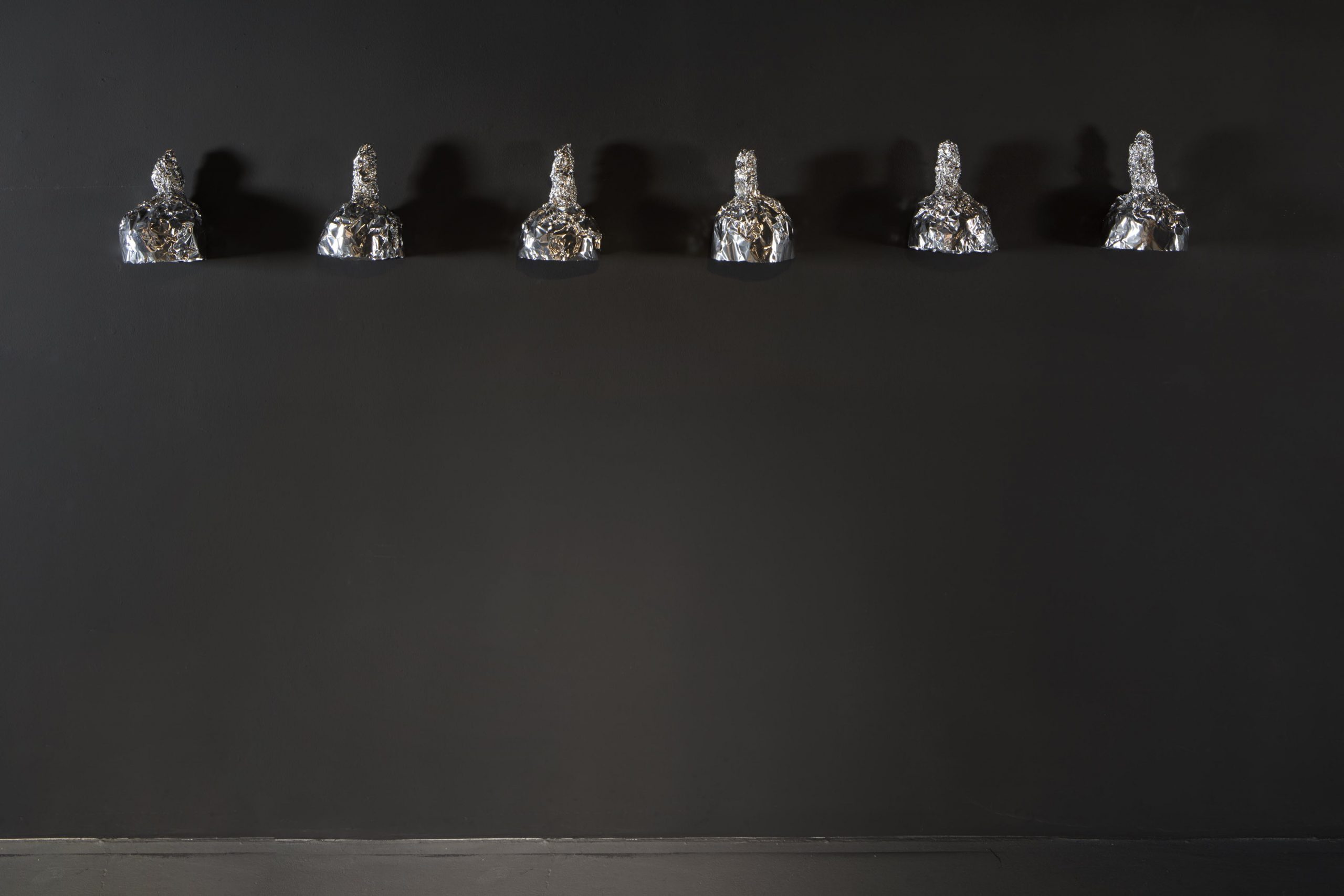

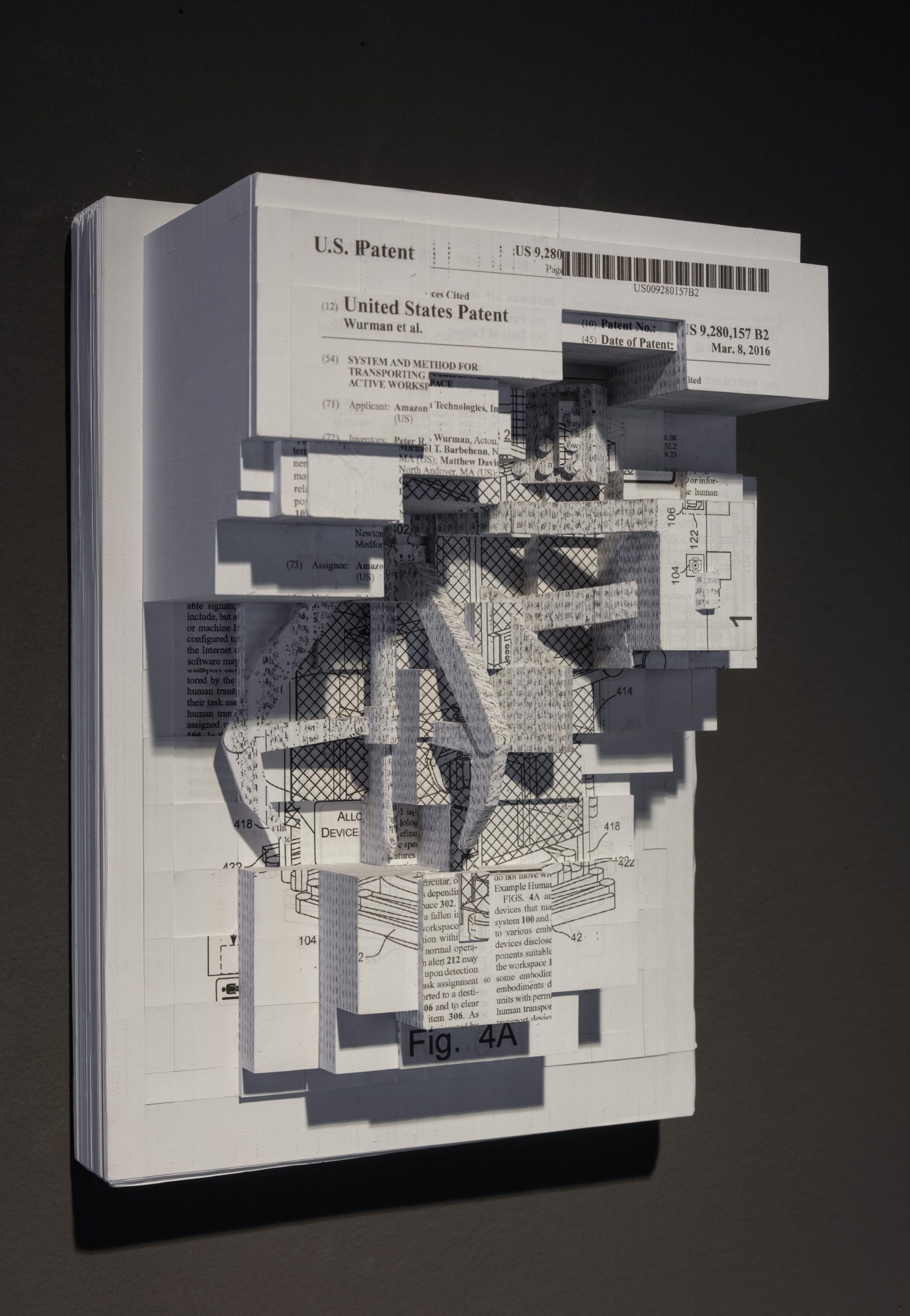

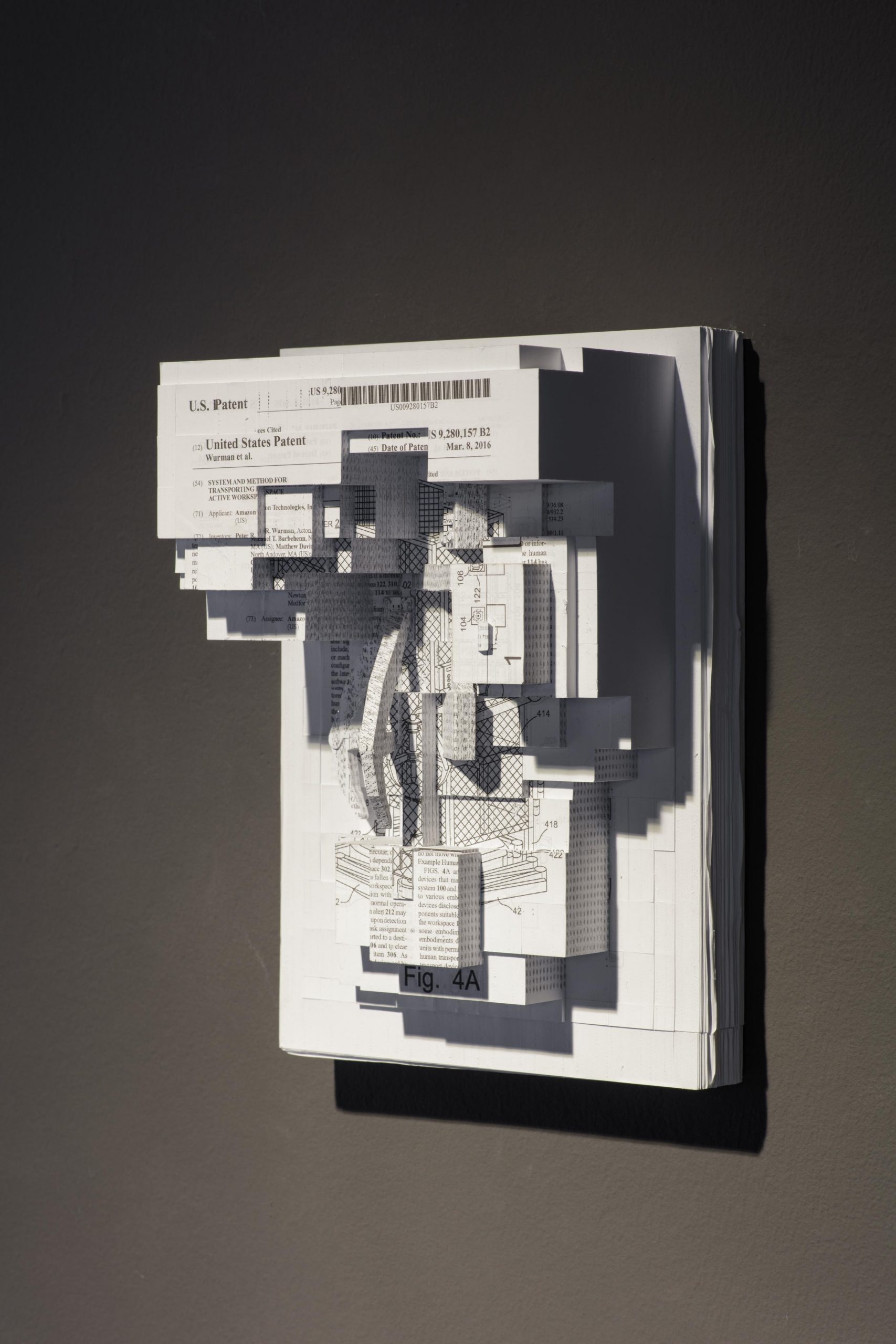

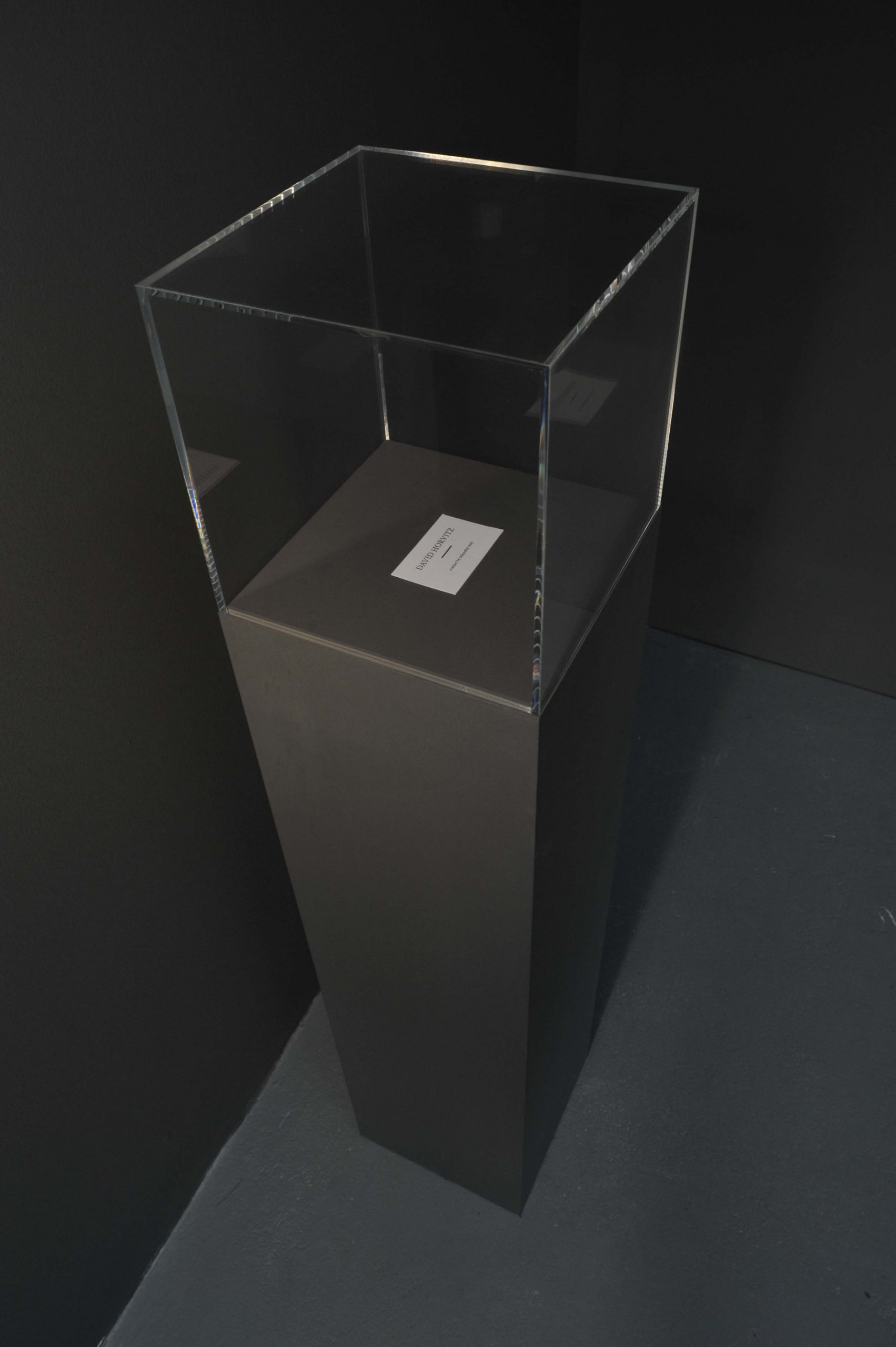
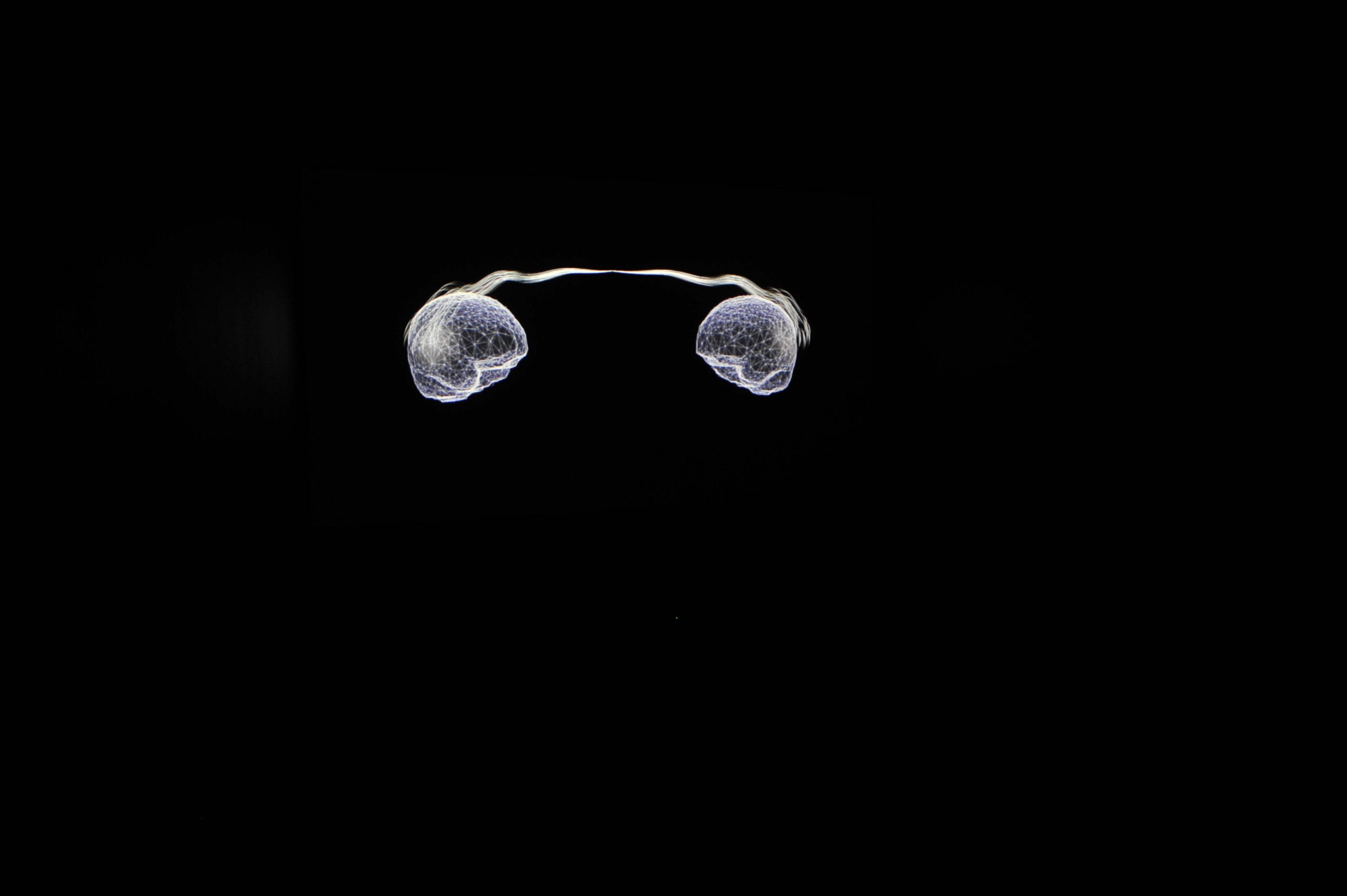
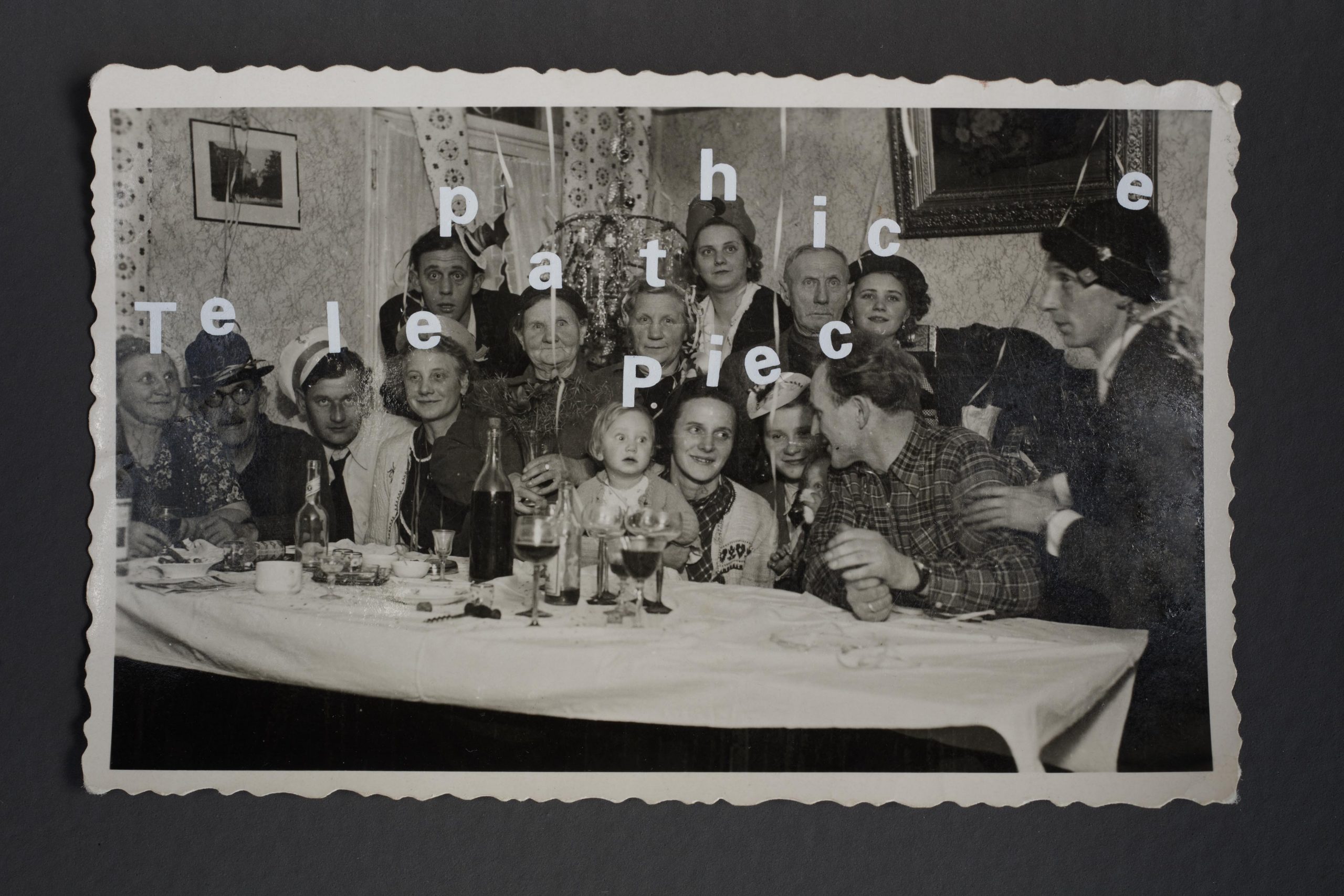
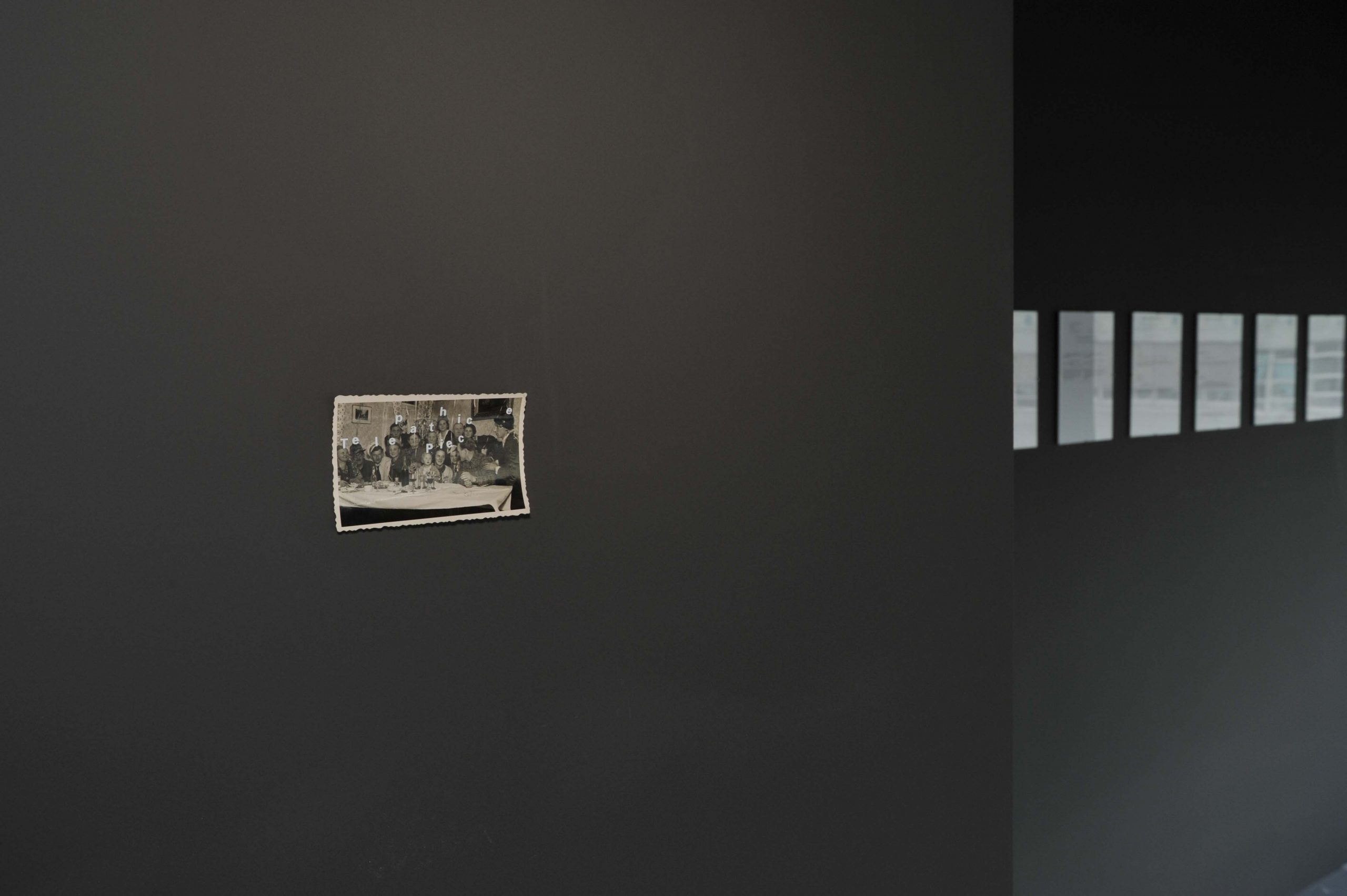
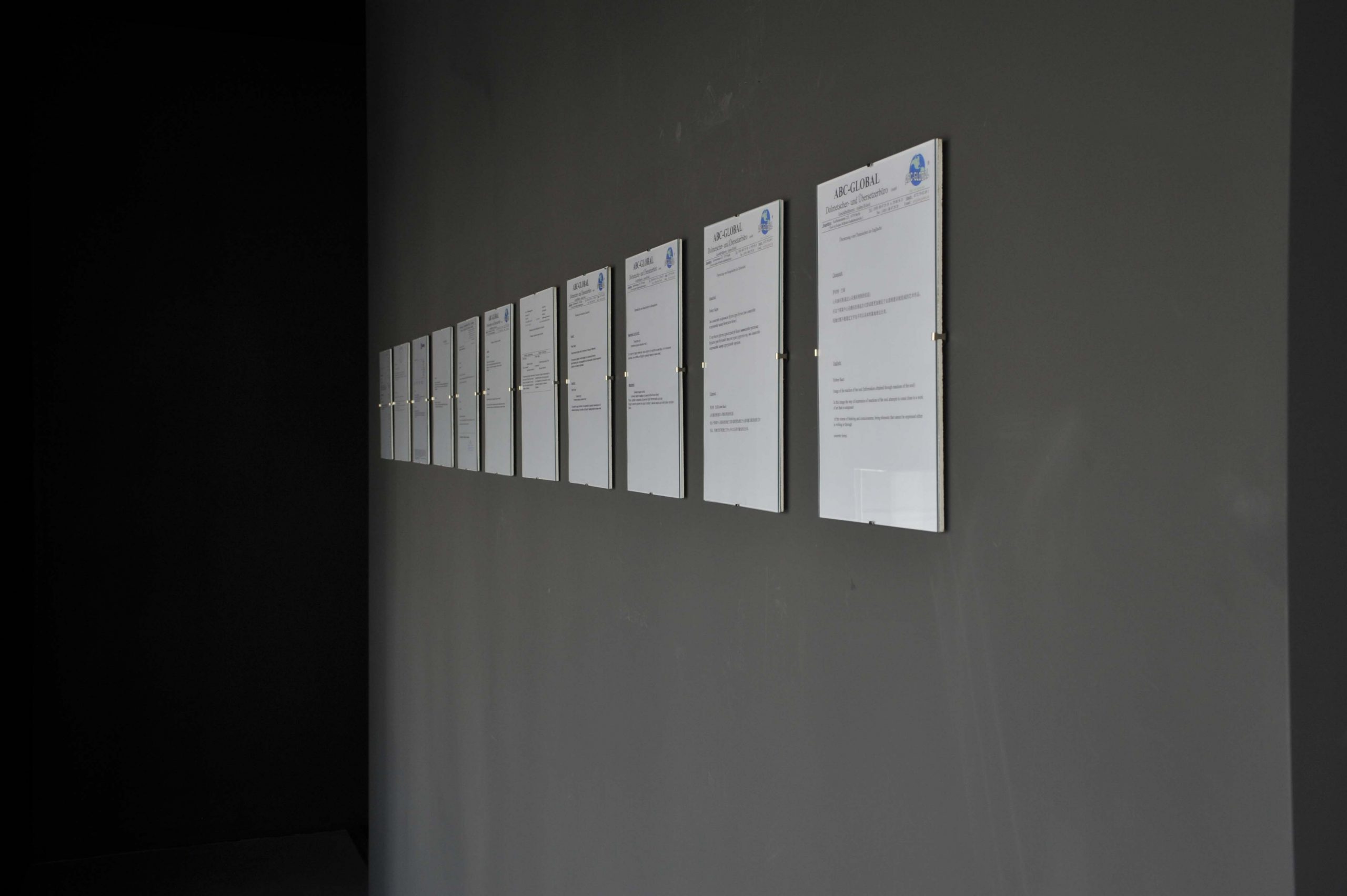
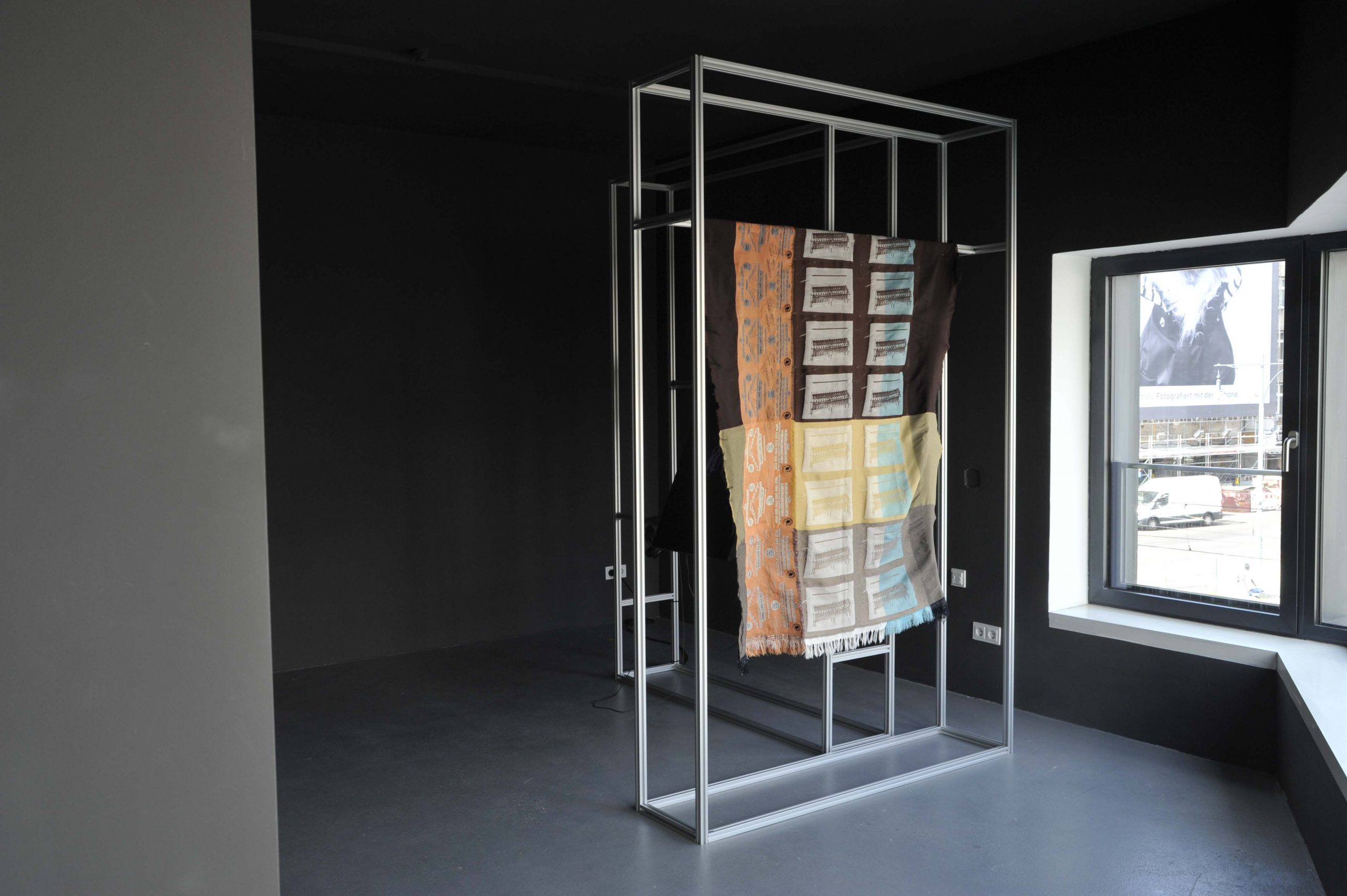
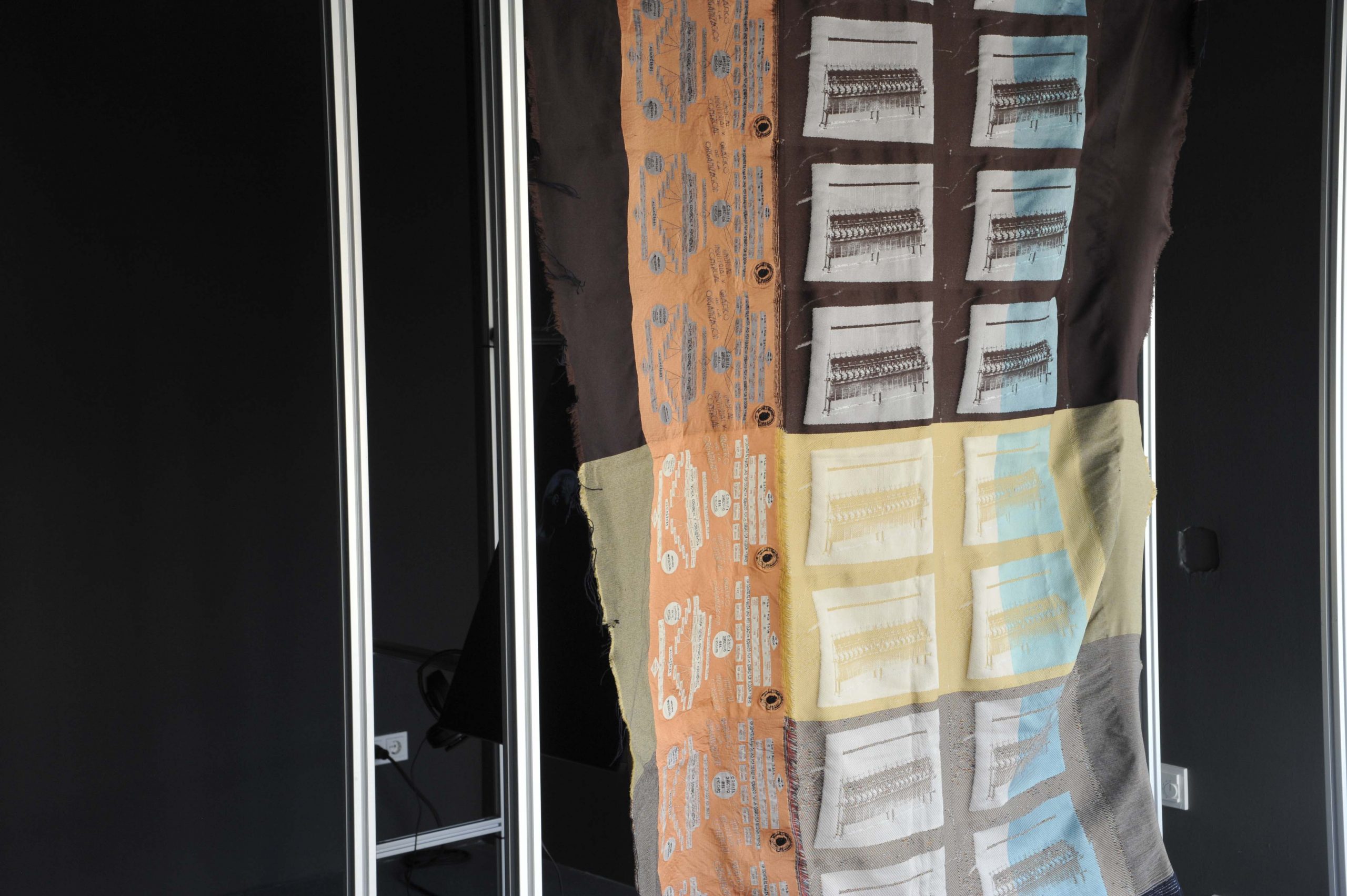
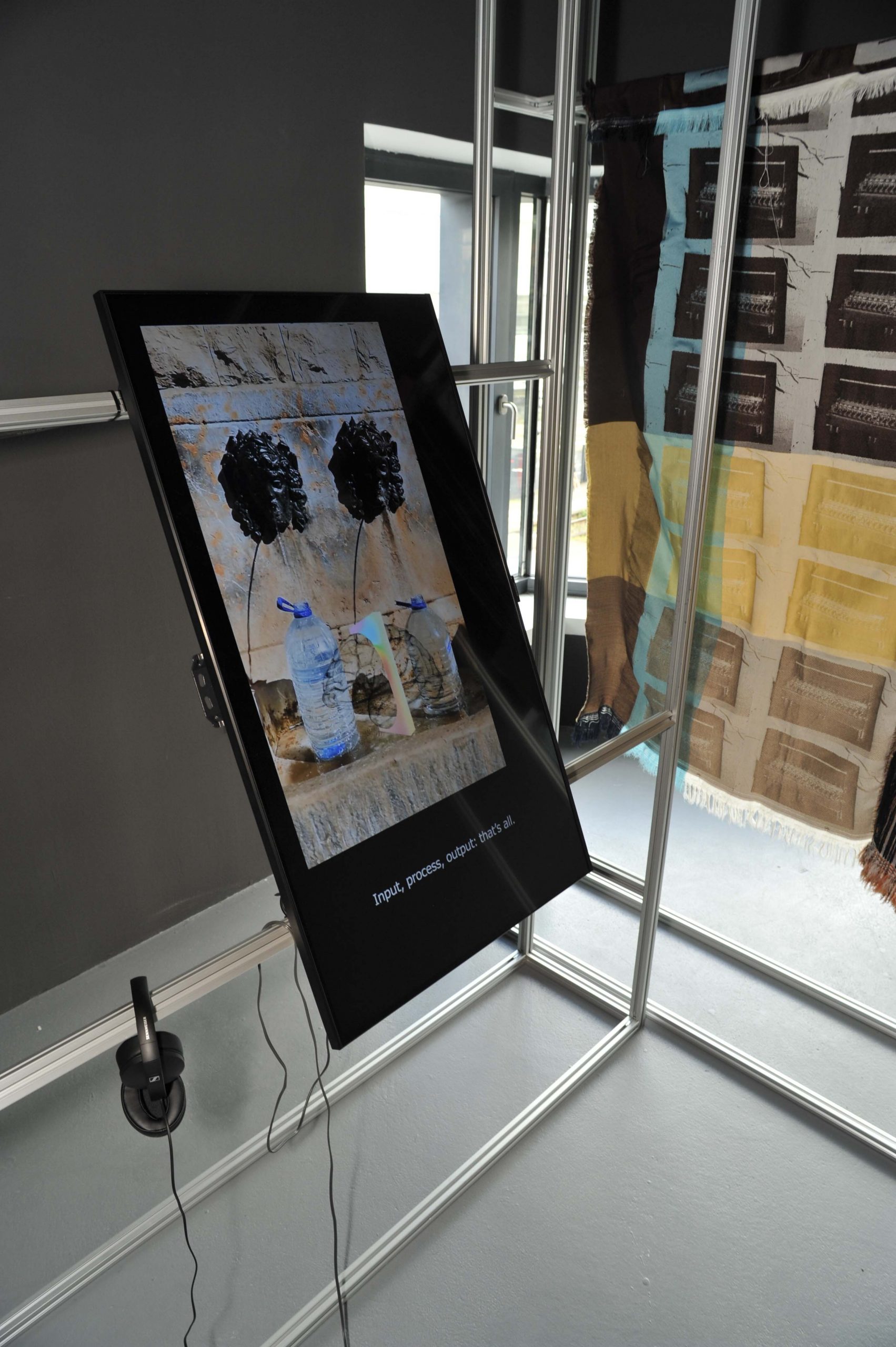
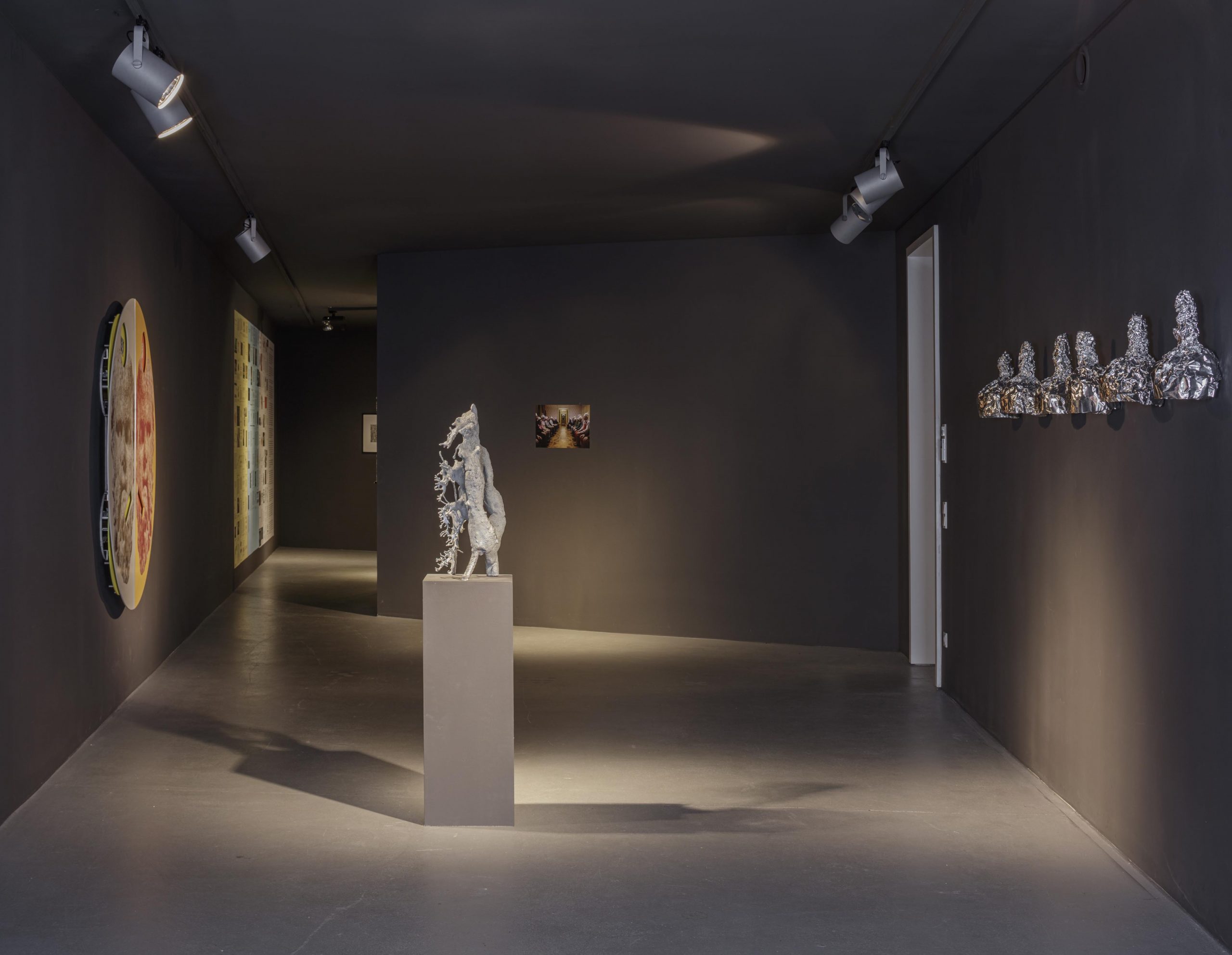
Curated by Warren Neidich Jacquelene Drinkall and
July 24–August 21, 2021
Öffnungszeiten: Di – Sa 14-19h*
Seit 20.8.21 gilt wieder die 3G-Regel. Darum bitte Impf-, Genesungs- oder Textnachweise mitbringen. Kommen Sie bitte auch weiterhin mit FFP2-Maske.
20.8.21, 17-21 h, Finissage und Vorstellung des Katalogs im Zeitungsformat mit zahlreichen Texten zum Thema und Dokumentation der gesamten Ausstellung.
Telepathie ist definiert als die Fähigkeit zu lesen, was im Kopf einer anderen Person vorgeht oder mit jemand anderem mental zu kommunizieren ohne Worte oder physische Signale zu benutzen. Es steht im Zusammenhang mit Begriffen wie Psychokinese, Sechster Sinn, Vorahnung, Weissagung, Telekinese und Teleästhesie. Eine Reihe von neuen ‚Technoceuticals‘, die technisch unterstütze Telepathie unterstützen, werden heutzutage schon verwendet, darunter invasive Neuroprothesen, Gehirn-Computer-Interfaces oder Neuronaler Staub.
Im Kognitiven Kapitalismus wurde die Fließbandarbeit des Proletariats durch kognitive Arbeit am und im ‚World Wide Web‘ ersetzt, wo auf Plattformen unaufhörlich Daten produziert werden. Normale Touchscreens und Tastaturen sind dabei eher langsame und ineffiziente Mittel zur Interaktion mit einem Computer. Elon Musk gründete deshalb ‚Neuralink‘ um das Problem zu überwinden, was er für das Haupthindernis der optimalen Menschen-Maschine-Verbindung hält: Bandbreite. Musk erhofft sich durch den Einsatz von Gehirn-Computern-Interfaces einvernehmliche Telepathie für jeden zu möglichen; nicht zuletzt, um die geistigen Kapazitäten im Arbeitsumfeld zu intensivieren. Diese Gehirn-basierten telepathischen und telemetrischen Technologien, die unsere Gehirnwellenmuster in für Analysen offene Datenströme umcodieren, öffnen ein Fenster zu unserem Bewusstsein. In Folge wird etwas Ähnliches wie das, was Shoshana Zuboff in ‚Überwachungskapitalismus‘ als ‘Big Other’ bezeichnet hat, zunehmende Bedeutung im Sinne von totaler Kontrolle und Subjektivierung erlangen.
Künstlerische Ansätze, die alternative Anwendungen telepathischer Praktiken jenseits der Optimierung von Arbeitskraft erforschen, haben das Potential, uns aus diesen zukünftigen Albträumen heraus zu experimentieren – vorausgesetzt wir haben den Willen das möglich zu machen.
20.8.21, 17-21 h, Finissage and launch of the exhibition catalogue in form of a newspaper with texts on the topic and a documentation of the entire show.
31.7. and 4.8.21, 18-20h, performative lecture in the foyer: Warren Neidich, Performing the Parthenon Marbles Recoded
with works by Kathryn Andrews, Simon Denny, Suzanne Dikker and Marina Abramović, Jacquelene Drinkall, David Horvitz, Agnieszka Kurant, Jonathan Monk, Gianni Motti, Lorenzo Sandoval, and Suzanne Treister.
Telepathy is defined as the ability to know what is in someone else’s mind (or to communicate with someone mentally) without using words or physical signals. It is related to such notions as precognition, psychokinetics, sixth sense, premonition, augury, precognition, telekinesis, and telesthesia. A bevy of new technoceuticals that support technologically assisted telepathic capacity (such as brain–computer interfaces, cortical implants, bio neuro-headsets, and neural ‘smart’ dust) are already in use. Elon Musk created Neuralink to overcome what he considers to be the main obstacle to optimum human–machine interaction in communication: bandwidth. Touch screens and keyboards are slow and inefficient means to interact with a computer. However, “neural lace” and “neural dust” provides a much faster high-bandwidth interaction with which Musk hopes to make consensual telepathy possible for everyone by using brain-computer interfaces to intensify their mental capacities in the workplace. In cognitive capitalism, the proletariat working on the assembly line has been replaced by the cognitariat working on the World Wide Web using virtual platforms to create data. These new brain-based mediated telepathic and telemetrix technologies, which recode our brain wave patterns into data streams open for analysis and algorithmic jurisprudence, have opened a window into our unconscious. As such, what Shoshana Zuboff in Surveillance Capitalism has called the “Big Other” will take on added significance as a means of total control and subjectivization. Artistic practices engaged with telepathic practices by producing alternative uses beyond optimization in the workplace create the possibility to experiment ourselves out of this future nightmare—if we only have the will to think and act to make it possible.
The project is supported by Haupstadtkulturfonds, and StediStiftung. The installation by Warren Neidich was made possible with funds from the Neustart program of the Stiftung Kunstfonds.
